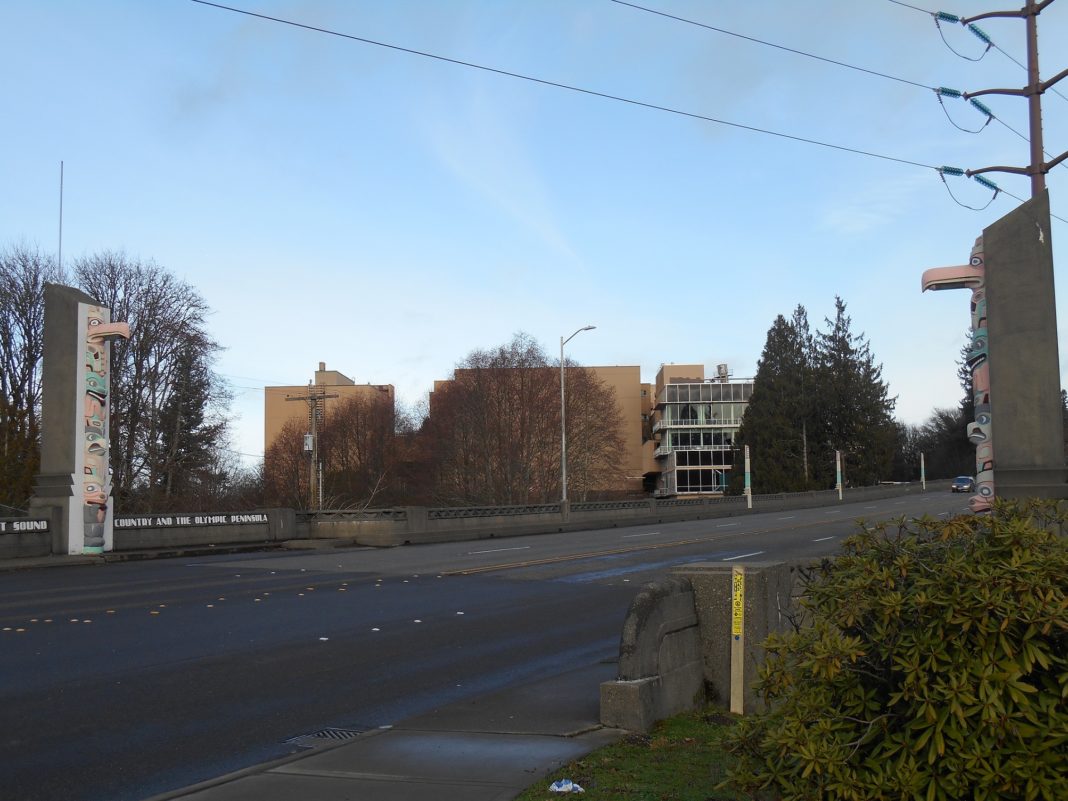Thousands of people cross Tumwater’s bridge on Capitol Boulevard every day, passing through the former Olympia Brewing Company complex. Although officially known as the Capitol Way Crossing, the bridge is more popularly known by locals as the Carlyon Bridge. This historic bridge reflects the history of transportation and its impact on our region.
 The invention of cars spawned the “Good Road Movement” in the early 20th century, as many people lobbied for roads to be improved and expanded. In response, a state highway system was created. This included the original Pacific Highway, later called Highway 99. Locally, the Pacific Highway originally funneled traffic through the main street of Tumwater and into south Olympia on what is now Capitol Boulevard, crossing the Deschutes River at the Boston Street Bridge, which was built in 1915.
The invention of cars spawned the “Good Road Movement” in the early 20th century, as many people lobbied for roads to be improved and expanded. In response, a state highway system was created. This included the original Pacific Highway, later called Highway 99. Locally, the Pacific Highway originally funneled traffic through the main street of Tumwater and into south Olympia on what is now Capitol Boulevard, crossing the Deschutes River at the Boston Street Bridge, which was built in 1915.
This winding state highway took traffic through the center of communities. However, with increasing numbers of automobiles in use, the Tumwater section of the road was soon considered one of the most hazardous sections of the Pacific Highway. There were four right-hand turns in addition to the narrow Boston Street Bridge. Thus in the 1930s, the state decided to reroute the highway more directly on the road presently known as Capitol Boulevard. For this, they needed another bridge across the Deschutes River.
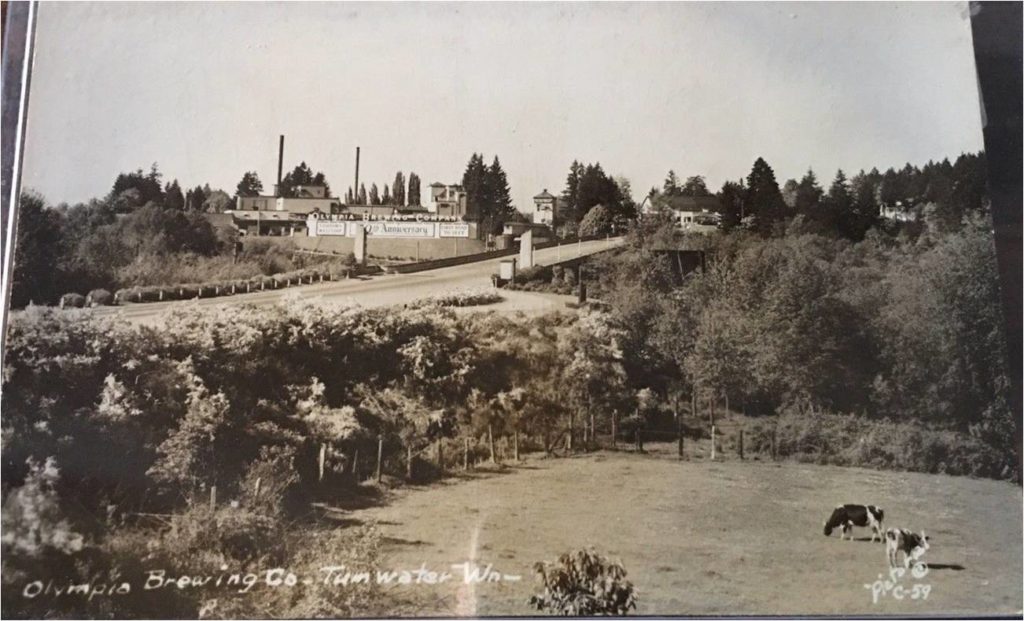
In the midst of the Great Depression, money for any projects was hard to come by. Fortunately, the new stretch of highway was funded as a federal aid project with Clark H. Elridge as bridge engineer. Construction began in 1936.
The completed structure was formally dedicated as the Carlyon Bridge on September 28, 1938. Retired Senator Philip Henry Carlyon, the bridge’s namesake, was a guest of honor at the event. Carlyon served as a legislator from Thurston County for many years in both the state house and senate. He was active in the Good Roads Movement, pushing through much pro-road legislation.
At the dedication, Governor Clarence D. Martin spoke, and the Olympia High School band played a short concert. The mayors of Olympia and Tumwater cut a rope made of autumn vines and leaves at the south entrance. Over three hundred cars were waiting to cross the bridge.
The bridge was quite an accomplishment to celebrate. Constructed for $232,778.00, the concrete girder bridge is 1,082 feet long with 18 concrete spans and four lanes. The entire 2.04-mile new stretch of road cost $400,000 to build.
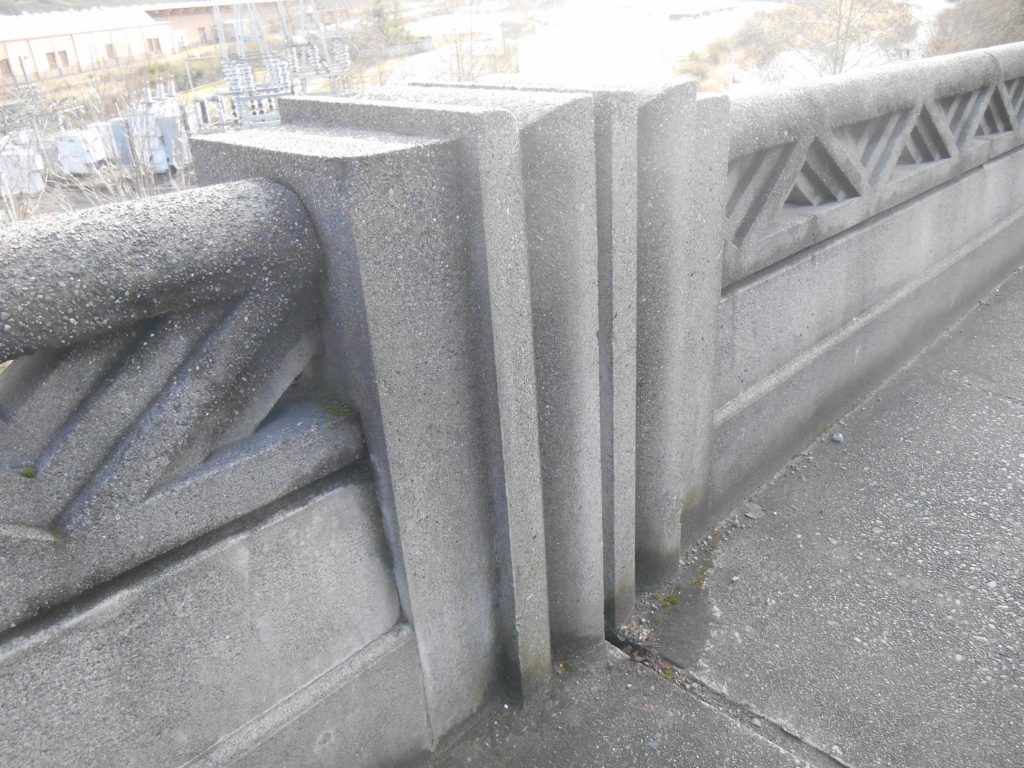
The most unique feature of the bridge is its 1930s Art Deco design. The structure reflects the clean and simple lines of the style with rounded curves and railings. Chevrons, a common Art Deco motif, are molded in low relief along the railings. Additionally, sixteen polychrome light poles line the bridge.
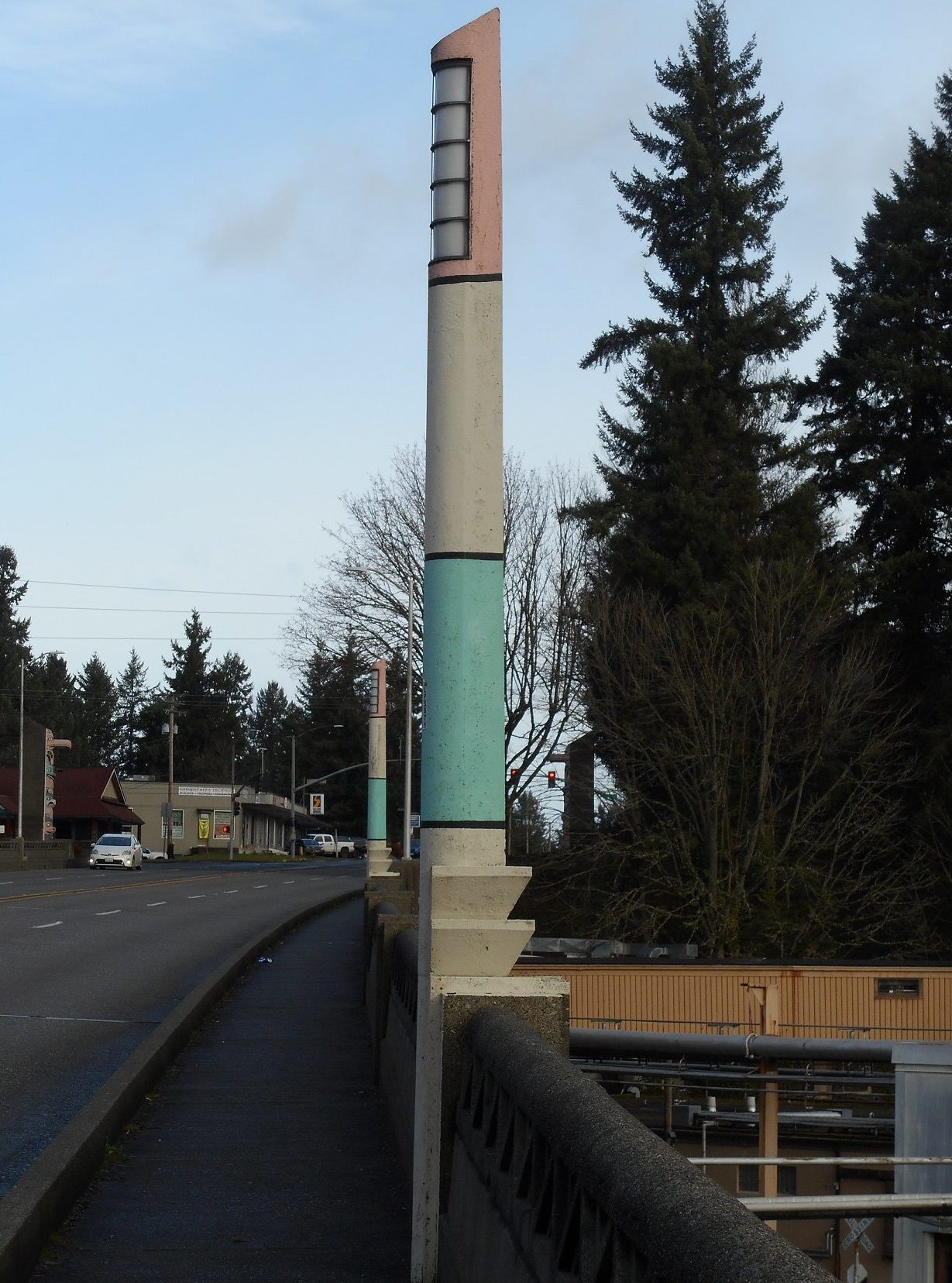
More unusually, concrete totem poles flank the entrances to the bridge. Two stand at the south end of the bridge, and two stand at the north end. The precast concrete poles were created by the Olympia Stone Company of Seattle. Each pole is identical, done in an Art Deco interpretation of Haida Native American style from British Columbia. Four animals are depicted on every pole: a raven, two bears and an eagle. The raven at the top hides a street light under its long beak. They are also painted in polychrome colors in keeping with Art Deco style.
Flanking each pole are precast concrete letters advertising the area’s tourist attractions and history. The four statements are “South Gateway to the Puget Sound Country and the Olympic Peninsula,” “Beginning of the Inside Passage to British Columbia and Alaska,” “Entrance to the City of Olympia Capital of the State of Washington” and “Site of the First American Pioneer Settlement in Washington 1845.” The last statement refers to New Market, the community founded near Tumwater Falls by Michael T. Simmons’ wagon train. His group also included George Bush, the noted African-American pioneer. New Market later became Tumwater.
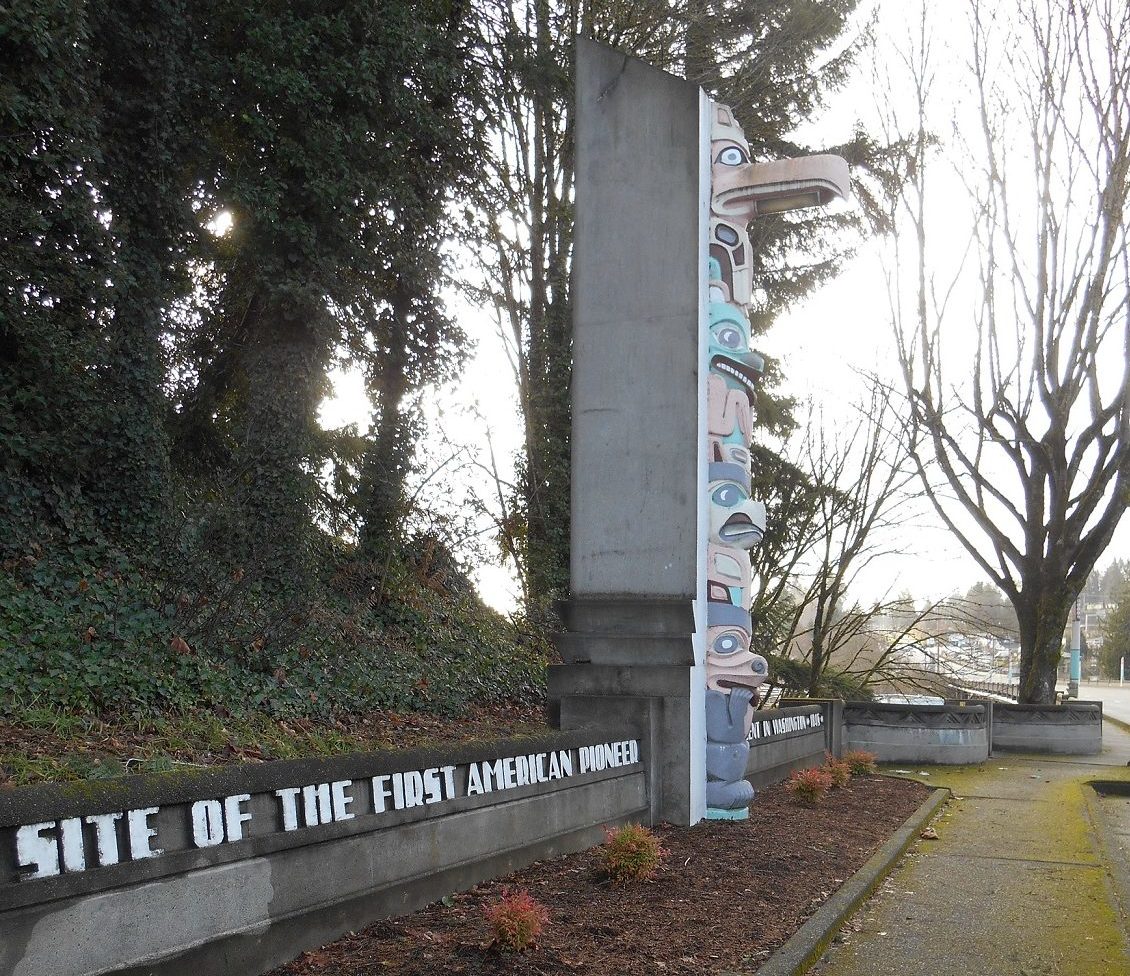
The new Carlyon Bridge changed the faces of both Tumwater and Olympia. This route for the highway steered traffic away from Tumwater’s main street, hurting business. Consequently, some businesses relocated. For example, the Chicken Coop restaurant moved from the intersection of Cleveland Avenue and Custer Way to a location near the northern entrance of the new bridge and renamed itself the Oregon Trail Café. It later became the South Pacific restaurant, which closed a few years ago.
More changes came in the 1950s. A new freeway, Interstate 5, rerouted traffic through the historic heart of Tumwater. Local traffic still continued on the old Carlyon Bridge, and the state government transferred ownership of the structure to the City of Tumwater.
However, the bridge’s historic significance was recognized, and in 1982 it was placed on the National Register of Historic Places as an excellent example of the Art Deco style. The Carlyon Bridge is a physical reminder of the great impact roads and transportation have played in shaping the modern face of Thurston County.







































